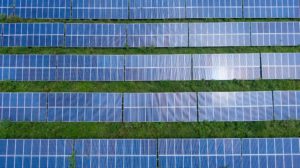Solar energy is the radiation emitted from the Sun that can be used to power our homes and businesses. It is one of the most powerful renewable sources available.
There are three main ways to harness this power: photovoltaics, solar heating & cooling, and concentrating solar power (CSP). These are all based on capturing the energy of the sun.
What is Solar Energy?
Solar energy is the ability to harness energy from the sun, one of the most abundant and powerful sources on Earth. It can be used to generate electricity, heat water, and power homes and businesses.
It is a renewable source of energy that can help us reduce our carbon footprint and meet our climate goals. It is also a clean, reliable, and affordable option for consumers.
Solar power is made up of photovoltaic cells, which capture sunlight directly. They can be grouped in panels to produce electricity for an entire house, or in arrays for larger power plants.
How Does Solar Energy Work?
Solar energy is a renewable source of electricity that comes from the sun, the biggest star in our galaxy. Every hour and a half, enough sunlight hits the Earth’s surface to power our entire planet’s energy needs for a full year.
Solar panels convert this energy into direct current (DC) electricity. That DC electricity is then transferred to an inverter that transforms it into alternating current (AC) that is used by our homes and businesses.
Solar energy also benefits the environment, by reducing greenhouse gas emissions and providing clean, renewable energy for electricity use. It also helps communities that currently rely on diesel generators to produce electricity.
Solar Panels
Solar panels are made of several small photovoltaic cells that capture sunlight and turn it into electricity. These cells are typically made of silicon, a semi-conductive material.
They are encased in glass and metal to protect them from the elements. These panels are grouped together into arrays that are installed on rooftops or in large outdoor spaces.
Step 2: The panels capture sunlight and convert it into direct current (DC) electricity. The energy flows through a series of wires to an inverter.
Once in the inverter, the electricity is converted into alternating current (AC) power that is usable for everyday use. This electricity is then used to power lights, appliances and other electrical devices.
Inverters
Inverters convert the DC power produced by your solar panels into alternating current (AC) that is compatible with the grid. This is an essential part of making your solar energy system work for you.
In addition to converting DC to AC, solar inverters also perform other tasks. These include voltage balancing and reactive power.
Smart inverters, for example, are designed to ride through small disturbances such as voltage or frequency changes and shut down only if the disruption lasts for a long time or is too large.
In addition, smart inverters can help provide grid services such as automatic generation control or battery management. These functions rely on the smart inverter’s ability to communicate with the grid and use advanced software.
Battery Banks
A battery bank stores the power generated by your solar array or wind turbine and feeds it back into your system when it’s needed. This can be useful when your system isn’t generating enough energy or during a power outage.
Battery banks are often one of the most complex and costly components of a stand-alone off-grid system, so it’s important to choose the right model for your needs. The size of your battery bank is a crucial factor in how much power it can store.
Typically, batteries are rated in mAh (milliampere-hours) which denotes their capacity for power flow over time. Lithium-ion and lithium-polymer batteries are common rechargeable cell types used in power banks.
